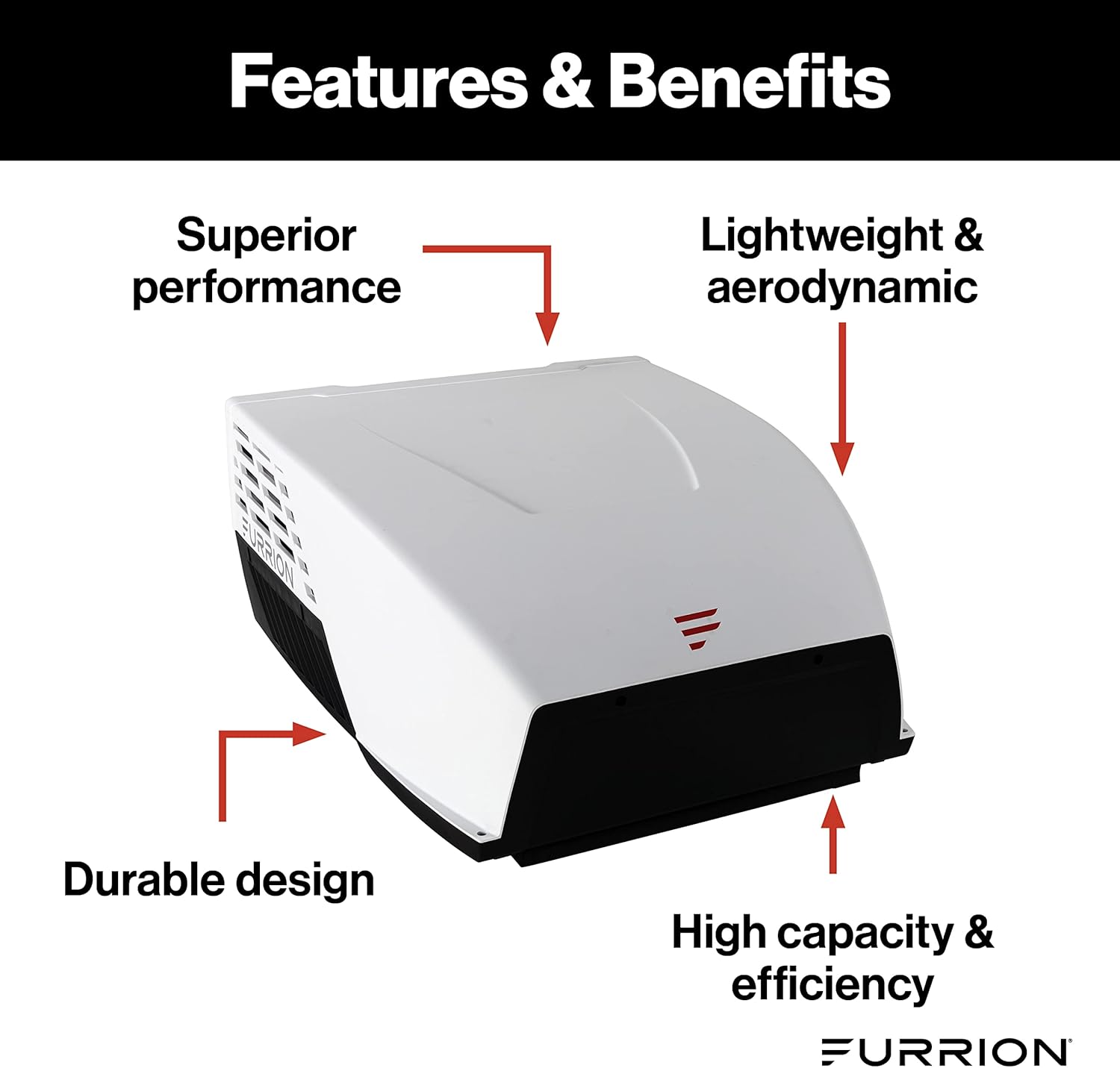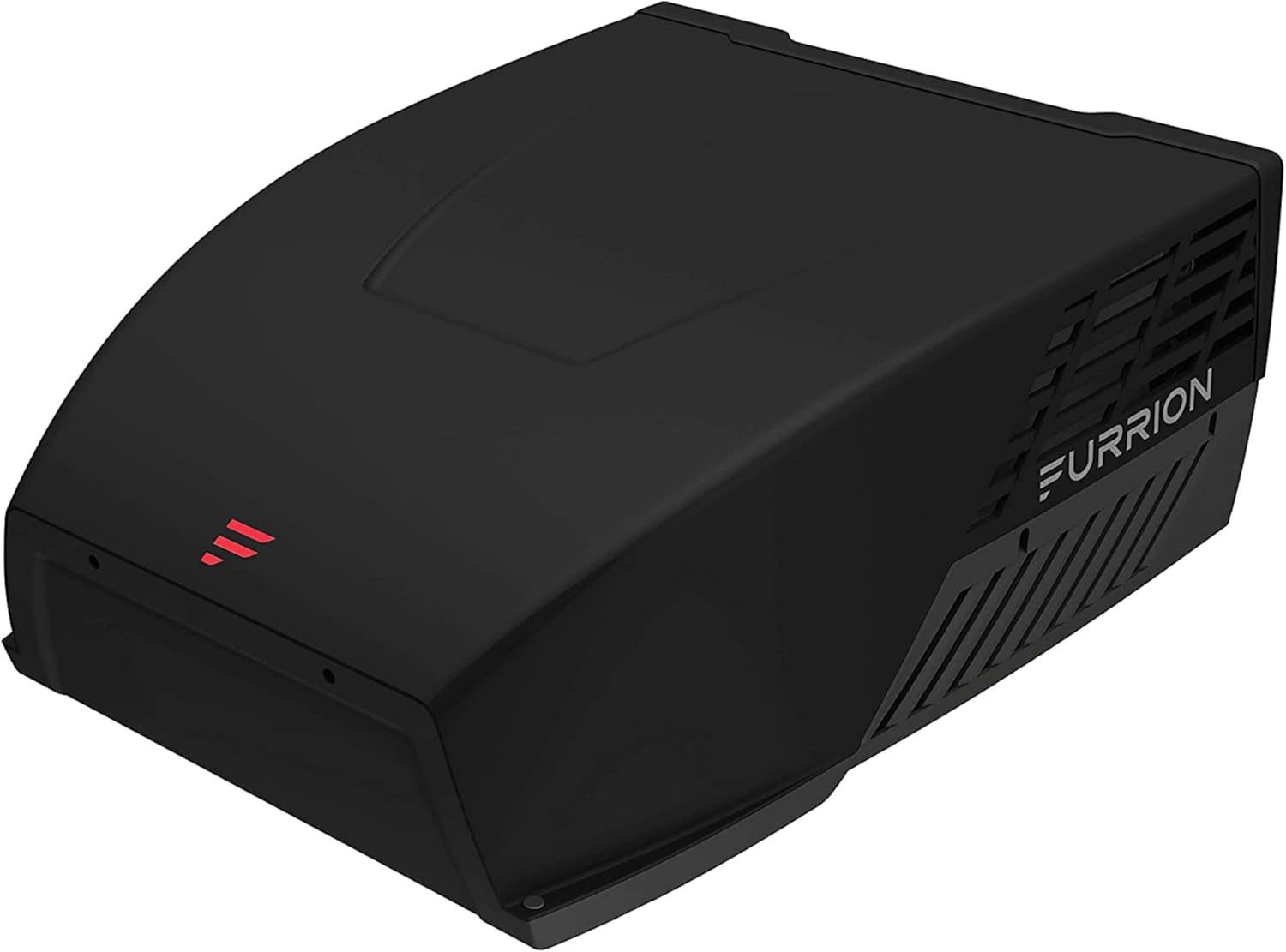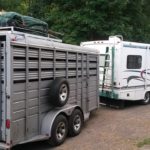Looking for an RV rooftop air conditioner that balances power, efficiency, and durability?
Overview: What the Chill® HE RV Roof Air Conditioner – 13.5K BTU, Black brings to your rig
You want reliable cooling without sacrificing fuel economy or adding too much road noise. The Chill® HE RV Roof Air Conditioner – 13.5K BTU, Black is designed to give you that blend: a dual-fan rooftop unit that promises more cooling capacity than many standard models while using less energy and producing less sound. This review breaks down how it performs in real-world RV use, what to watch for during installation and maintenance, and whether it fits your travel style and rig.
Chill® HE RV Roof Air Conditioner - 13.5K BTU, Black
$819 Only 5 left in stock - order soon.
Quick specs at a glance
Below is a compact breakdown of the unit’s main features so you can get a quick sense of what you’re working with.
| Feature | Details |
|---|---|
| Model | Chill® HE RV Roof Air Conditioner – 13.5K BTU, Black |
| Cooling capacity | 13,500 BTU |
| Fan configuration | Dual-fan system |
| Cooling vs industry standard | ~50% higher cooling capacity |
| Energy efficiency | ~40% more efficient than industry standard |
| Noise | ~50% quieter than single-fan models |
| Design highlights | Lightweight, aerodynamic rooftop shroud |
| Durability features | Vibrationsmart, Climatesmart technologies; thermal-insulated shroud |
| Installation | Simple bolt-on installation with step-by-step guide |
| Ideal use | RVs, campers, trailers (roof-mounted) |
Design and build quality
You’ll notice the Chill HE’s modern rooftop silhouette right away. Its black aerodynamic shroud is designed to reduce drag and wind resistance, which helps keep your RV’s mileage and driving behavior closer to normal than a bulky, boxy replacement might. The unit also aims to be lighter than some older models, making rooftop handling and lift easier when you or a technician installs it.
The build emphasizes protective features. Vibrationsmart and Climatesmart technologies are included to minimize stress from road vibration and to shield components from environmental exposure. The thermal-insulated shroud further protects internal parts from heat, water, UV damage, and debris — all things that shorten the life of rooftop ACs if not properly managed.
Aerodynamics and weight
You’ll appreciate the low-profile shape when you drive cross-country. A streamlined shroud reduces wind noise and drag, which can make a subtle but measurable difference on long hauls. The unit’s lighter weight eases rooftop support concerns and simplifies the lifting and bolting process during installation.
Durability features explained
You don’t want fragile electronics or tiny fasteners rattling loose on rough roads. Vibrationsmart implies reinforced mounting and internal component support to resist loosening and damage. Climatesmart refers to the ability to withstand temperature swings, moisture, and UV exposure. Between these and the insulated shroud, the Chill HE is built to last longer than many older rooftop designs that lacked such targeted protections.
Cooling performance
Your primary concern is how well this unit cools. With 13,500 BTU and a two-fan system, the Chill HE is built to move cool air faster and more evenly throughout your RV. Two fans generally distribute airflow with less resistance and fewer hot spots than single-fan systems, so you can expect more comfortable interior temperatures, even during peak afternoon heat.
The higher cooling capacity—about 50% above many basic industry units—means the Chill HE can handle larger or poorly insulated rigs better than a standard 8,000–9,000 BTU model. If you run a larger travel trailer, a fifth-wheel, or have lots of glass and roof vents, that extra capacity is useful.
Cooling coverage and ideal RV size
While BTU rating isn’t the only factor that determines comfort, the 13.5K BTU capacity typically works well for medium to large RVs. If your RV is well insulated and you practice good shading, you can expect this unit to keep living spaces comfortable in most summertime conditions. For extremely large coach rigs or those with exceptional heat loads (like direct desert sun and poor insulation), you may still need additional ventilation strategies or a supplemental unit in sleeping areas.
Airflow and the two-fan advantage
Two fans provide redundancy and balanced airflow, so the Chill HE can push conditioned air deeper into the living space without straining a single blower motor. You’ll notice more even temperatures and quicker recovery when doors or windows are opened. The airflow design also contributes to lower perceived noise since each fan doesn’t need to spin as hard to achieve the same airflow as a single-fan model.
Energy efficiency and operating costs
Running an RV AC on shore power, generator, or inverter can be costly, so efficiency matters. The Chill HE claims about 40% more energy efficiency compared to industry standards. That means you’ll typically draw less current for a comparable cooling output, helping reduce runtime on generators and lowering shore power consumption.
Energy efficiency also affects battery-backed systems or solar setups. If you boondock and keep your alternator or inverter/solar system running the AC periodically, the improved efficiency can stretch your resources further and reduce generator hours — a real plus when you want quieter, off-grid nights.
Seasonal performance and power draw considerations
You should always check the detailed electrical specifications before installation to confirm compatibility with your RV’s wiring, breaker size, and generator capacity. In very hot conditions, any AC will draw more power on startup and while under heavy load, so make sure your existing electrical system (or planned upgrades) can handle the inrush and continuous draw. The Chill HE’s efficiency gives you margin, but don’t skip verifying amperage and breaker requirements.
Noise levels
You care about noise — both while driving and when relaxing in your RV. The Chill HE is designed to be roughly 50% quieter than single-fan rooftop models. That’s significant: quieter operation means better sleep, more pleasant conversation, and less disturbance when parked in busy campgrounds or quiet natural settings.
Real-world expectations for sound
Don’t expect absolute silence; all rooftop ACs produce some hum, fan noise, and compressor cycling. The Chill HE’s dual-fan layout and quieter design will reduce harsh tonal noises and make the AC less obtrusive. If you sit directly beneath the unit outside while it runs, you’ll notice it, but inside the RV and at normal living distances, you should find it much less noticeable than older single-fan units.
Installation and compatibility
You’ll find the Chill HE marketed as an easy bolt-on replacement for most standard rooftop openings. It includes a clear step-by-step installation guide, which is a big advantage if you plan to do the work yourself or want to know what contractors will do.
A couple of practical tips: measure your roof opening before buying, confirm the unit’s mounting hole pattern matches your existing flange or mounting frame, and inspect your roof’s structural integrity and sealant condition before installing. If your RV has older or weakened roof material, reinforce or repair it first.
What to expect during installation
Installation typically involves removing the old unit, setting the new unit on the roof gasket, aligning the bolt pattern, wiring to the RV’s supply and control lines, and sealing the mount to prevent leaks. You’ll want two people for safe handling because, even if relatively lightweight, the unit is bulky and awkward to lift onto a rooftop. Use the provided guide and torque specs to avoid over-tightening bolts which can crack the shroud or roof flange.
Compatibility with RV controls and thermostats
The Chill HE should integrate with most RV thermostat control systems, but you need to verify wiring compatibility. If you have a factory digital controller or an aftermarket thermostat, consult the Chill HE wiring diagram and your controller manual to ensure proper hookup. If you’re not comfortable with electrical work, have a qualified RV technician handle the wiring.
Controls and features
The product description highlights the structural and performance features more than specific control features, so you’ll want to check the included manual for details on the thermostat, fan speeds, and any electronic features. Many modern rooftop units support variable fan speeds, multiple cooling stages, and integration with RV wall thermostats. Confirm whether your purchase includes a new thermostat, remote, or whether you’ll reuse the RV’s existing controller.
Smart controls and optional upgrades
If you prefer smart control, you can often pair efficient rooftop units like the Chill HE with aftermarket thermostats and remote controls that offer programmable schedules, Wi-Fi control, or energy-saving modes. Before upgrading, confirm compatibility with the unit’s compressor and fan control wiring.
Durability, weather resistance, and longevity
Durability is a highlight of the Chill HE. With features aimed at resisting vibration and climate-induced wear, you can expect longer life and fewer service calls if you maintain it. The insulated shroud and reinforced mounting help prevent water ingress and protect sensitive components from direct sun and debris — common failure points on older or cheaper rooftop units.
Preventive maintenance remains essential: regular filter changes, coil cleaning, and inspection of seals and mounting bolts will extend service life. Even with advanced protections, neglect can lead to performance drops or failures over time.
Maintenance and serviceability
You’ll want to build a simple maintenance routine the first season you own it. Replace or clean filters at recommended intervals, clean the condenser coils annually (or more often if you camp in dusty or salty environments), and inspect seals to prevent water leaks. The Chill HE’s design that emphasizes access and protection should make routine service straightforward.
If you ever need parts or service, keep your serial numbers and installation documentation accessible. The Chill HE uses common HVAC parts in many ways, but confirm part numbers through the manufacturer for warranty and repair compatibility.
Troubleshooting common issues
You’ll run into a few predictable problems with any rooftop AC — here’s how to handle them quickly.
- AC not cooling: Check thermostat set point, airflow obstructions, dirty filters, and whether the compressor runs. Verify electrical connections and breaker status.
- Excessive noise: Inspect mounting bolts for looseness, look for debris interfering with fans, and examine vibration-isolating mounts. A damaged fan blade or motor bearing can cause increased noise and should be serviced.
- Water leaks: Inspect gasket seals around the mount and the shroud. Check internal drain channels for blockages. Reapply proper RV roofing sealant if needed.
- Short cycling/compressor issues: Ensure proper refrigerant charge and electrical supply. If the compressor cycles rapidly, contact a qualified technician.
When in doubt, consult the service manual or a trained RV HVAC tech — compressors and refrigerant work should be left to professionals.
Pros and cons
You want a quick list to weigh your decision. Here’s a balanced look at what you’ll likely appreciate and what to watch out for.
Pros:
- Strong 13,500 BTU cooling capacity for medium-to-large RVs
- Two-fan system improves airflow distribution and comfort
- Claimed ~40% higher energy efficiency lowers operating costs
- Quieter operation (~50% quieter than single-fan models)
- Durable design with vibration and climate protection
- Lightweight, aerodynamic shroud that reduces drag
- Straightforward bolt-on installation with guide
Cons:
- You must verify electrical compatibility and roof mounting pattern before purchase
- Exact noise and efficiency gains depend on installation and RV configuration
- If you have a very large coach or extreme heat loads, a single unit may not be sufficient
- Manufacturer warranty and service network availability vary; confirm prior to buying
How the Chill HE compares to single-fan and older rooftop models
You’ll notice key differences if you’re upgrading from a single-fan model or an older rooftop AC:
- Cooling power: The Chill HE’s 13.5K BTU is significantly higher than many common older units, which often were 8–10K BTU.
- Air distribution: Dual fans reduce hot spots and improve circulation compared to a single-fan design.
- Noise and efficiency: The combination of dual fans and efficient compressor design is intended to be both quieter and more energy efficient.
- Longevity: The protective shroud and vibration-resistant design target common failure modes in older units.
If you’re deciding between replacing an existing single-fan rooftop AC or upgrading to this unit, weigh the cost of purchase and installation against ongoing energy savings and improved comfort. For many owners, quieter operation and better cooling justify the upgrade.
Who should consider the Chill® HE RV Roof Air Conditioner – 13.5K BTU, Black?
You’ll find this unit especially attractive if you:
- Own a medium-to-large RV or trailer and want stronger cooling capacity.
- Prefer quieter operation while parked in campgrounds or during travel.
- Value energy efficiency because you use a generator or boondock with limited power.
- Want a rugged rooftop unit that tolerates long road trips and varied climates.
- Want an upgrade that’s bolt-on friendly and doesn’t require extensive roof modifications.
If you own a small camper or micro-trailer, the Chill HE might be more capacity than you need. If your RV is extremely large or has very poor insulation, consider whether a single unit will be enough or if a dual-zone solution is better.
Cost considerations and installation budgeting
You’ll want to budget for the unit cost plus installation unless you do it yourself. Typical installation costs vary depending on region and whether roof reinforcement or electrical upgrades are needed. Expect to add:
- Professional installation labor if you don’t install yourself (labor rates vary widely)
- Possible roof repairs or reinforcement if the mounting area is worn
- New gasket or sealing materials
- Any necessary electrical upgrades (breakers, wiring, or generator capacity adjustments)
If you handle the installation yourself, you save on labor but should still plan for a helper, safety equipment, and the right tools. Always follow the included installation guide and torque specifications to avoid damage.
Tips for getting the best performance from your Chill HE
You’ll get the most comfort and efficiency by using good habits and helping the system do its job:
- Shade windows when parked; reflective shades reduce heat load significantly.
- Keep vents closed when running the AC to reduce infiltration of hot outside air.
- Maintain clean filters and coils seasonally to preserve airflow and efficiency.
- Use awnings or campsite positioning to reduce direct sun on the roof.
- Verify and maintain door and window seals to prevent cool air loss.
- If boondocking, stagger AC runtime or use eco modes to align with your power budget.
Warranty, support, and parts
You’ll want to verify warranty coverage and service options at purchase. Most manufacturers require product registration to activate full warranty benefits, and parts availability is essential for long-term ownership. Before you buy, confirm:
- Warranty length and what it covers (compressor, parts, labor)
- How to register the product and submit claims
- Local service centers or authorized technicians
- Availability of replacement parts and filters
Keeping installation documentation, serial numbers, and purchase receipts is essential for a smooth warranty process.
Frequently asked questions (short answers)
You’ll likely have a few common questions before you decide. Here are concise answers:
- Will it fit my RV? Check your roof opening dimensions and bolt pattern; the unit is designed as a bolt-on replacement for many standard openings but confirm fit before buying.
- Can I install it myself? If you’re comfortable working on roofs and with basic electrical hookups, you can install it using the provided guide. Otherwise, hire an RV technician.
- How much power does it use? The Chill HE is designed to be more efficient than many older units (about 40% better), but check the manual for exact amperage and start-up current to confirm compatibility with your power setup.
- Is it quieter than my current unit? It’s designed to be about 50% quieter than single-fan models. Actual noise reduction depends on your RV’s structure and installation quality.
- What maintenance is required? Regular filter cleaning/replacement, annual coil cleaning, and periodic seal/mount inspections.
Final verdict
You’re looking for a rooftop air conditioner that prioritizes cooling power, quieter operation, and improved energy efficiency — and the Chill® HE RV Roof Air Conditioner – 13.5K BTU, Black delivers a compelling mix of those features. Its dual-fan system and protective design address many common issues RV owners face, from uneven cooling and excessive noise to damage from road vibration and weather exposure.
If you want better performance without a radically different installation process, and if your RV’s electrical system can support it, this unit is a strong candidate. Confirm fit, wiring compatibility, and warranty details before you buy, and follow best practices during installation to get the best long-term value and comfort from the Chill HE.
Disclosure: As an Amazon Associate, I earn from qualifying purchases.













